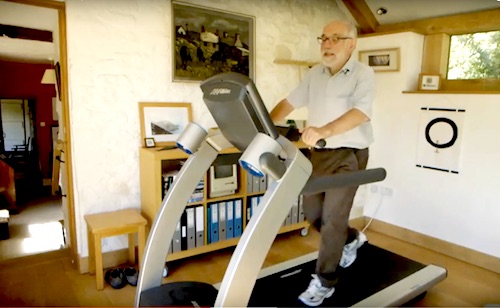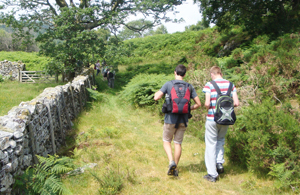In McArdle disease, building and maintaining a high level of aerobic fitness is essential. Here we introduce key aspects which can help you do just that.
Activity and exercise are greatly beneficial
Keeping active is vitally important to people with McArdle disease. It improves aerobic fitness, helps to avoid muscle wasting and assists you to achieve and maintain an ideal weight. All these are very important to people with McArdle’s – positively making life easier for us.
Walk whenever it is practical.
Build aerobic activity into your life
Exercising 3 to 5 times a week, for at least 30 to 45 minutes is ideal. It can be difficult to build this into our busy modern lives, so to help with that it is good to try to build some activity into our normal lives.
- Perhaps we can park a little further away and walk to our workplace?
- Walk the children to school instead of driving them?
- Climb one flight of stairs and then take the lift the rest of the way?
Adjust, adapt, avoid
The “101 Tips” book helps us to learn how to adjust, adapt, or avoid certain activities and thus can help us to protect ourselves.
![]() Take great care with any intense or static activity.
Take great care with any intense or static activity.
Take care with anaerobic activity
It is essential to be very wary of anaerobic activity (such as: lifting heavy weights, sprinting or just opening a new jam jar that is stuck). This is because maximal anaerobic activity beyond about 6 to 10 seconds needs a supply of energy from glycogen stored in the muscle, but that is not available to us in McArdle’s. Without that energy supply the muscle is quickly damaged causing pain and cramping.
Regular aerobic exercise is currently the best “treatment” for McArdle’s.
Take plenty of aerobic exercise
Aerobic activity (such as walking) is highly beneficial. People with McArdle’s need to learn how to safely get into “second wind”, which takes about 7 to 10 minutes. They also need to learn techniques to help them in slightly more challenging situations such as inclines, stairs, soft ground, etc.
There is a lot of information available to help people with McArdle’s to learn to keep active safely. Publications such as the “Living life with McArdle disease” booklet are a great help in starting to exercise and keep active, but there is also information available free online from IamGSD.
Take a walking course
Learning the necessary techniques, getting motivated and extending your boundaries can be safely enjoyed on a “Walking with McArdle’s” course.





